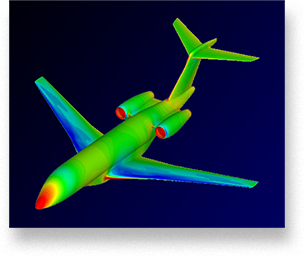Why numerical analyses
Any product requires verification during its design spiral and its verification may be complex and expensive, depending on the use the object is intended for. In case of verification of devices intended to interact with a fluid, the costs can be significant. Furthermore it is not always possible to investigate every aspect of this interaction.
Computational Fluid Dynamics (CFD) is a relatively recent technology that, like most of the numerical techniques computationally expensive, has linked its development to the growth of the power of computational resources. With CFD it is possible today to study problems ranging from incompressible multiphase fluid to hypersonic aerodynamics. Examples of problems commonly studied with CFD techniques in various fields of engineering are:
Aerospace
|
Automotive
|
Engines
|
Marine
|
Benefits of using CFD
CFD technologies are not just “virtual” test benches, wind tunnels or towing tanks. They are a very powerful “design tools” which, as well as they allow you to speed up the design process, help to explore the design limits. The benefits arising from the use of CFD are the possibilities to:
 |
|
How we can support you
Design Methods has expertise deriving from the use, over two decades, of CFD commercial and research codes in the aerospace field. The type of CFD analysis we offer are:
- steady and unsteady;
- compressible and incompressible;
- laminar and turbulent;
- mono and multiphase (two or more fluids that interact each other);
- mono and multiframe (frames in relative motion);
- 6DOF (six degree of freedom bodies dynamics);
- fluid-structure interaction.



